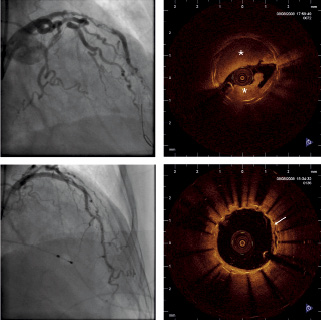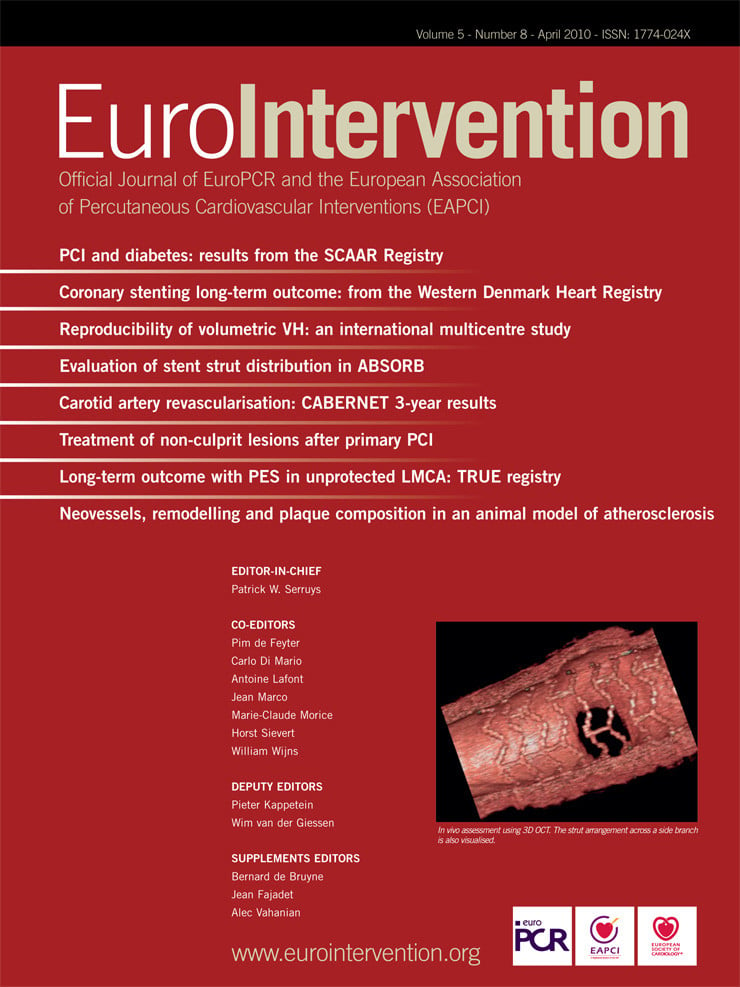Case description
A 68 year old female presented with an acute ST-segment elevation anterior wall myocardial infarction and was brought to the catheterisation laboratory for a primary percutaneous coronary intervention. After confirmation of a thrombotic occlusion of the left anterior descending coronary artery (LAD) (due to late stent thrombosis) the lesion was crossed with a 0.014” X 180 cm MIRACLEbros 3 guidewire (ASAHI Intecc, Redwood City, CA, USA). The thrombus burden was categorised as TIMI Thrombus Grade 41,2. We proceeded with aspiration thrombectomy using a Thrombuster catheter (Kaneka Medix Corp., Kaneka Corp., Osaka, Japan). The LAD was then evaluated by Optical Coherence Tomography (OCT) with a C7-XR Dragonfly OCT Catheter (LightLab Imaging, Westford, MA, USA) confirming considerable remaining endoluminal thrombus2,3. After introducing a temporary pacemaker into the right ventricle a second run of thombectomy was attempted with the Angiojet Rheolytic thrombectomy catheter (Possis Medical, MN, Minnesota, USA). Control OCT demonstrated an impressive improvement with only minimal residual endoluminal thrombus and pointed towards stent malapposition in the proximal segment (not shown in the image). An 3.5x23 mm XIENCE V DES (Abbott Vascular, Aichi, Japan) was positioned in the proximal LAD. The final angiogram showed brisk TIMI 3 flow with adequate myocardial blush.

Figure 1. Upper panels: coronary angiogram and OCT image after aspiration thrombectomy: overlapping stent struts and considerable remaining thrombus (*) are clearly visible. Lower panels: coronary angiogram and OCT image after rheolytic thrombectomy with only minimal residual mural thrombus (white arrow).

